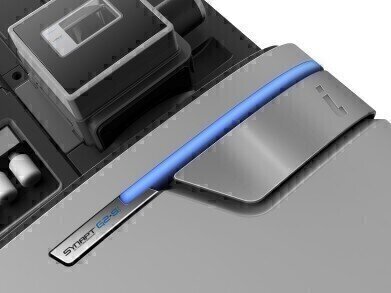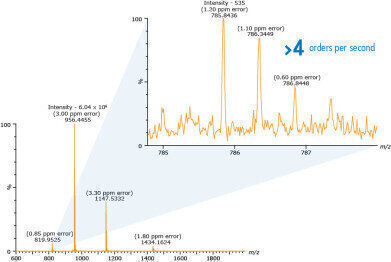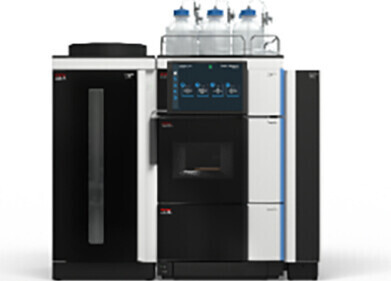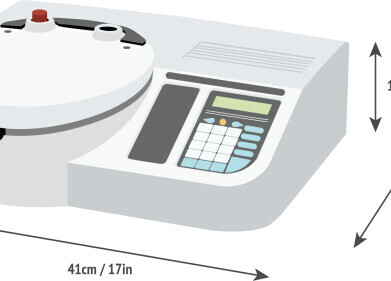Chromatography
Three dimensions of resolution. SYNAPT G2-Si is the only way to view them all
May 27 2014
Chromatography. Mobility. Mass. Sometimes mass resolution and chromatography are not enough. With high-efficiency ion mobility, you can use an additional dimension of separation, based on molecular size and shape. The unique ability to use the collision cross section property of a molecule delivers the highest levels of selectivity, specificity, sensitivity and structural insight.
The collision cross-section (CCS) is an important distinguishing characteristic of an ion that is related to its chemical structure and three-dimensional conformation in the gas-phase. A molecule’s conformation can be influenced by a number of factors, such as the number and location of charges. The measured CCS of an ion can be used to help confirm its identity or investigate its structure.
CCS can be determined from T-WaveTM ion mobility separations simply and quickly, for a wide range of analytes from small molecules, lipids and peptides, to larger species such as polymers and protein complexes.
When your progress is limited by missing information or the risk of false positive results in your analysis, the combination of StepWaveTM ion optics, the QuanTofTM analyser and MSE ‘data-independent’ acquisitions will maximize your chances of success, By providing the best qualitative and quantitative performance attributes, these innovative technologies significantly increase compound coverage and confidence in identification, characterization, and quantitation for your most demanding applications.
SYNAPT® G2-Si is equipped with a larger ion sampling orifice, an enhanced vacuum pumping configuration and revolutionary StepWave ion transfer optics. This groundbreaking dual T-Wave, off-axis design transfers ions from the ion source to the quadrupole MS analyser with the highest possible efficiency, at the same time as ensuring undesirable neutral contaminants are actively filtered out.
QuanTof’s high-field pusher and dual-stage reflectron, incorporating high-transmission parallel wire grids, reduce ion turnaround times due to pre-push kinetic energy spread and improve focusing of high energy ions respectively.
These innovative technologies combine to provide the highest levels of Tof performance. The unique ion detection system combines an ultra-fast electron multiplier and ‘hybrid ADC’ detector electronics to provide outstanding sensitivity and quantitative performance.
For access to a unique range of experimental possibilities to improve identification, characterisation or localization of specific compounds, Triwave is the key. Triwave employs the T-Wave ion guides, allowing ions to be trapped and accumulated, separated based on their mobility and then transferred to the QuanTof analyser for high-resolution analysis. Triwave’s innovative configuration also ensures that the introduction of IM is not made at the expense of sensitivity.
High ion mobility resolution has been achieved through increased operating pressure in the Triwave device (via the addition of a novel Helium filled entry cell in the IMS T-Wave). The TRAP and TRANSFER T-Wave regions can be used independently or together as collision cells, with (HDMS mode) or without (TOF mode) ion mobility separations, providing a unique and diverse range of experimental possibilities for improved and more complete structural characterization.
SYNAPT G2-Si High Definition MS delivers the highest level of selectivity and peak capacity without compromise.
Digital Edition
Lab Asia Dec 2025
December 2025
Chromatography Articles- Cutting-edge sample preparation tools help laboratories to stay ahead of the curveMass Spectrometry & Spectroscopy Articles- Unlocking the complexity of metabolomics: Pushi...
View all digital editions
Events
Jan 21 2026 Tokyo, Japan
Jan 28 2026 Tokyo, Japan
Jan 29 2026 New Delhi, India
Feb 07 2026 Boston, MA, USA
Asia Pharma Expo/Asia Lab Expo
Feb 12 2026 Dhaka, Bangladesh





















